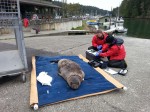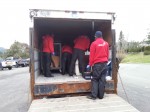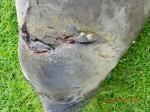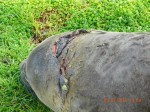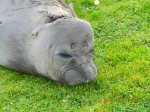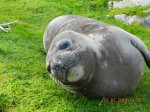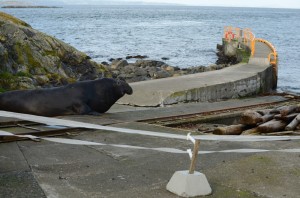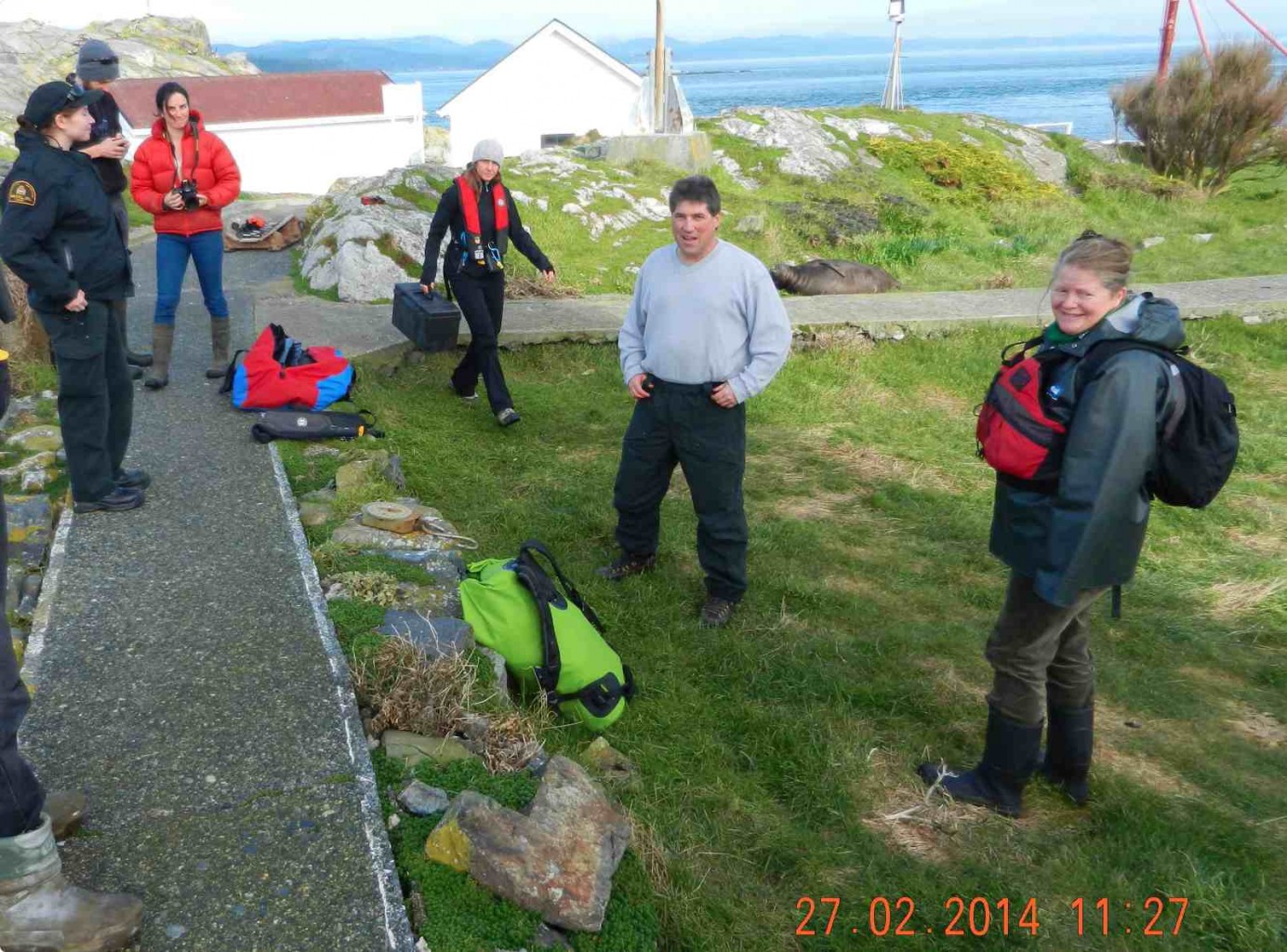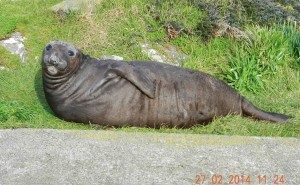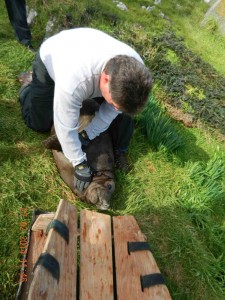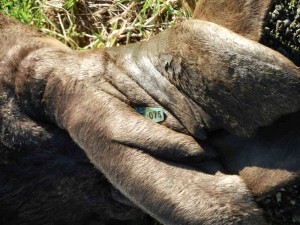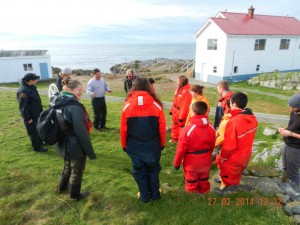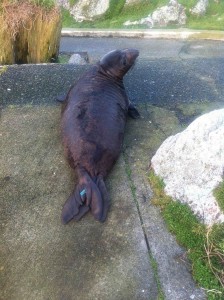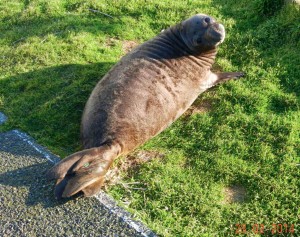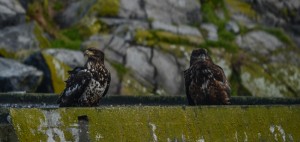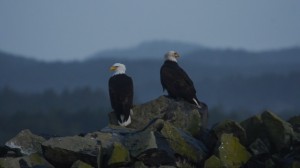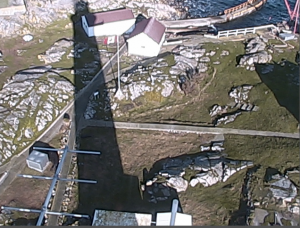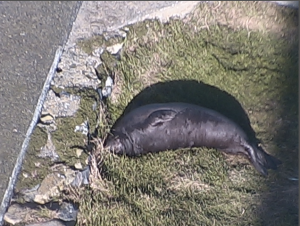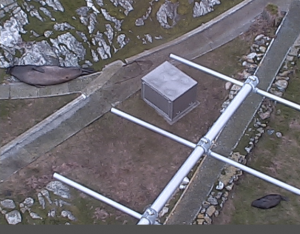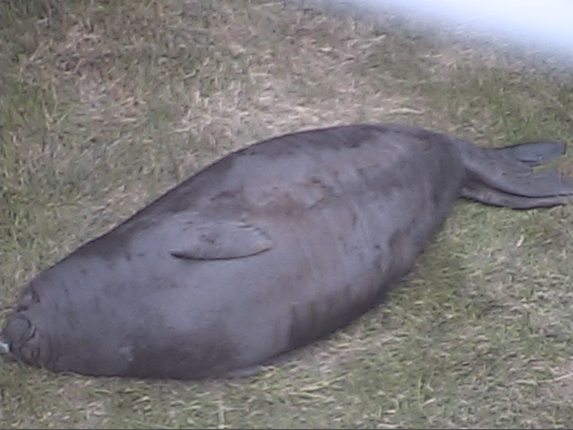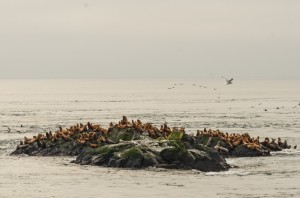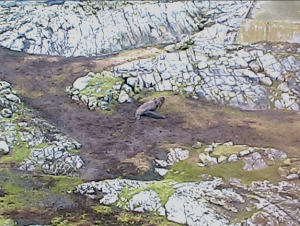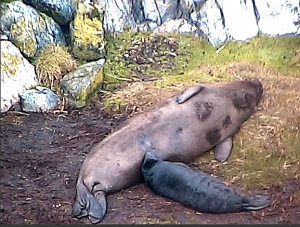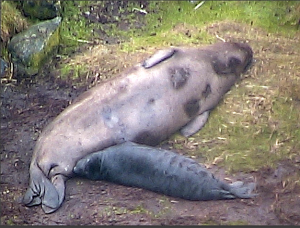Since the last update about the pup its condition continued to deteriorate. On Wednesday March 12, the pup appeared to be losing coordination and mobility. Its movement was very laboured and its behaviour seemed distressed. In the afternoon it made its way to a puddle on the North side of the main house and went into convulsions.
While I had been sending updates and photos each day to DFO on Wednesday I sent two videos http://youtu.be/zv–ICW0TDc and http://youtu.be/
On Thursday March 13th the Marine Mammal Rescue team from the Vancouver Aquarium was deployed. They arrived at the Pedder Bay Marina around 1600. The marina had generously agreed to send out one of their boats and a staff volunteered to captain it. I met them at the marina in the station boat and we brought the rescue team of 5 with gear out to Race Rocks. Upon arrival they could tell that the pup was in critical condition. One of the team members told me they had never seen one in such bad shape. They gave it a sedative and moved it onto a sling to transport it to the Pedder Bay Marina boat. Once back at the marina they set the pup down and gave it further treatment and washed out the wounds. They left around 17:45 and made in time to catch the 19:00 ferry to Vancouver.
At 8:47 PM they sent the following update:
“Alright, we are just about to go off the ferry and drive toward MMR. The animal is still in critical shape. He is minimally responsive to stimuli…The animal is having episodes of full blown seizure lasting up to 2 minutes.”
Just after 11 pm they sent a final update:
“Unfortunately, our little guy did not make it. We treated him aggressively en route to the rescue center, but he arrested at 10:45 PM. Emergency resuscitation was attempted unsuccessfully. I am so sorry to have to share the sad news of his death. Thank you so much to everyone who chipped in to help with his rescue today.”
- Van Aqua crew prepare sedative and sling
- Van Aqua crew before moving pup onto sling
- pup on sling in the parking lot at Pedder Bay Marina receiving treatment
- Pup in cage loaded in back of truck before leaving for Vancouver
I am very grateful to everyone who was involved in this difficult situation and who helped try to rescue him. The Vancouver Aquarium team were remarkably caring and dedicated; they did all they could do, it was too late.
My 3.5 month shift ends today. The highlight of the last few months has been watching this beautiful little creature every day since its birth in January. Watching and listening to it die over the course of the past two weeks, right outside our house, has been more difficult, stressful and frustrating than I could have ever imagined. I wish I could have done more for him. Living here with these creatures is like a blessing and a curse.



